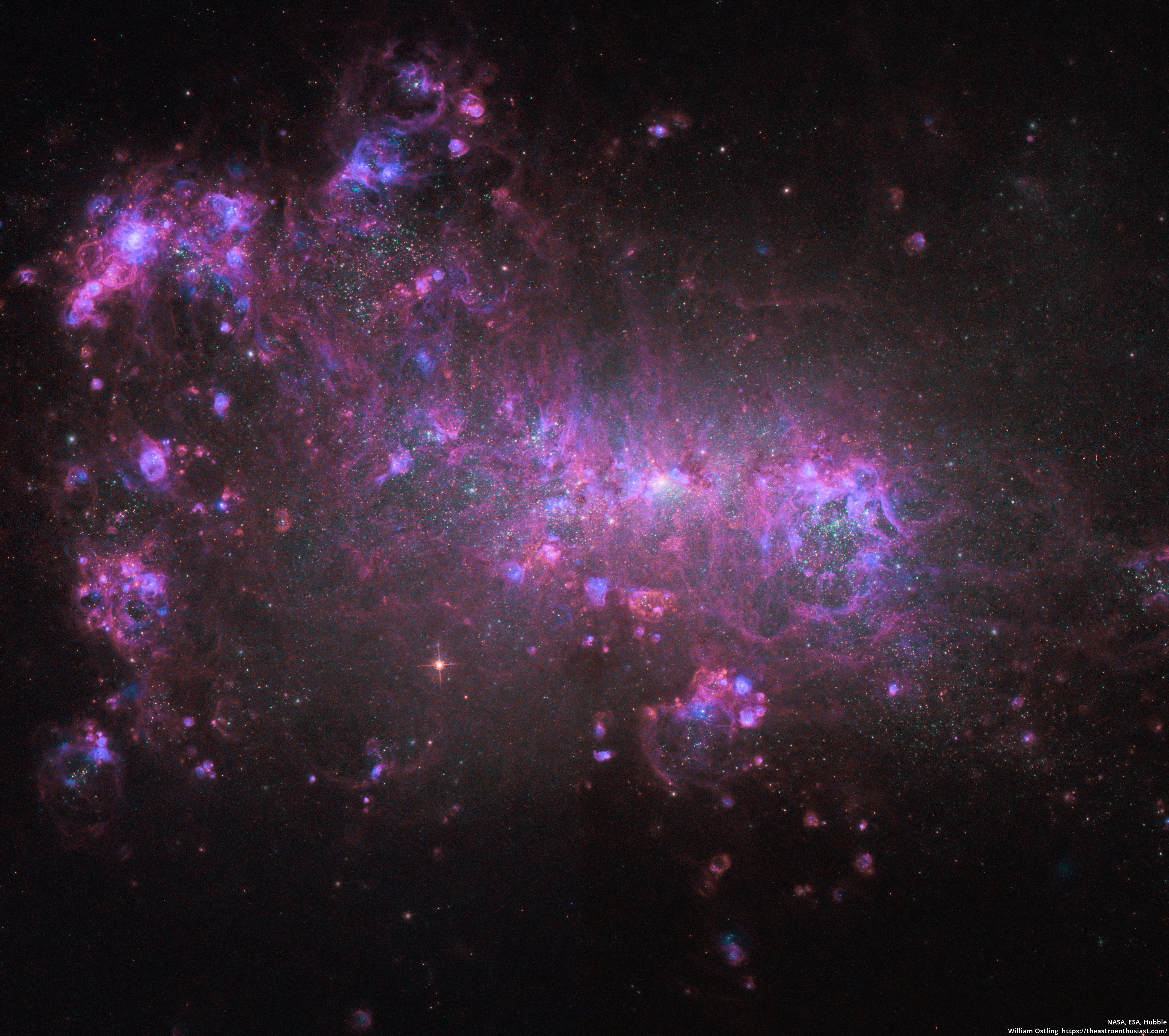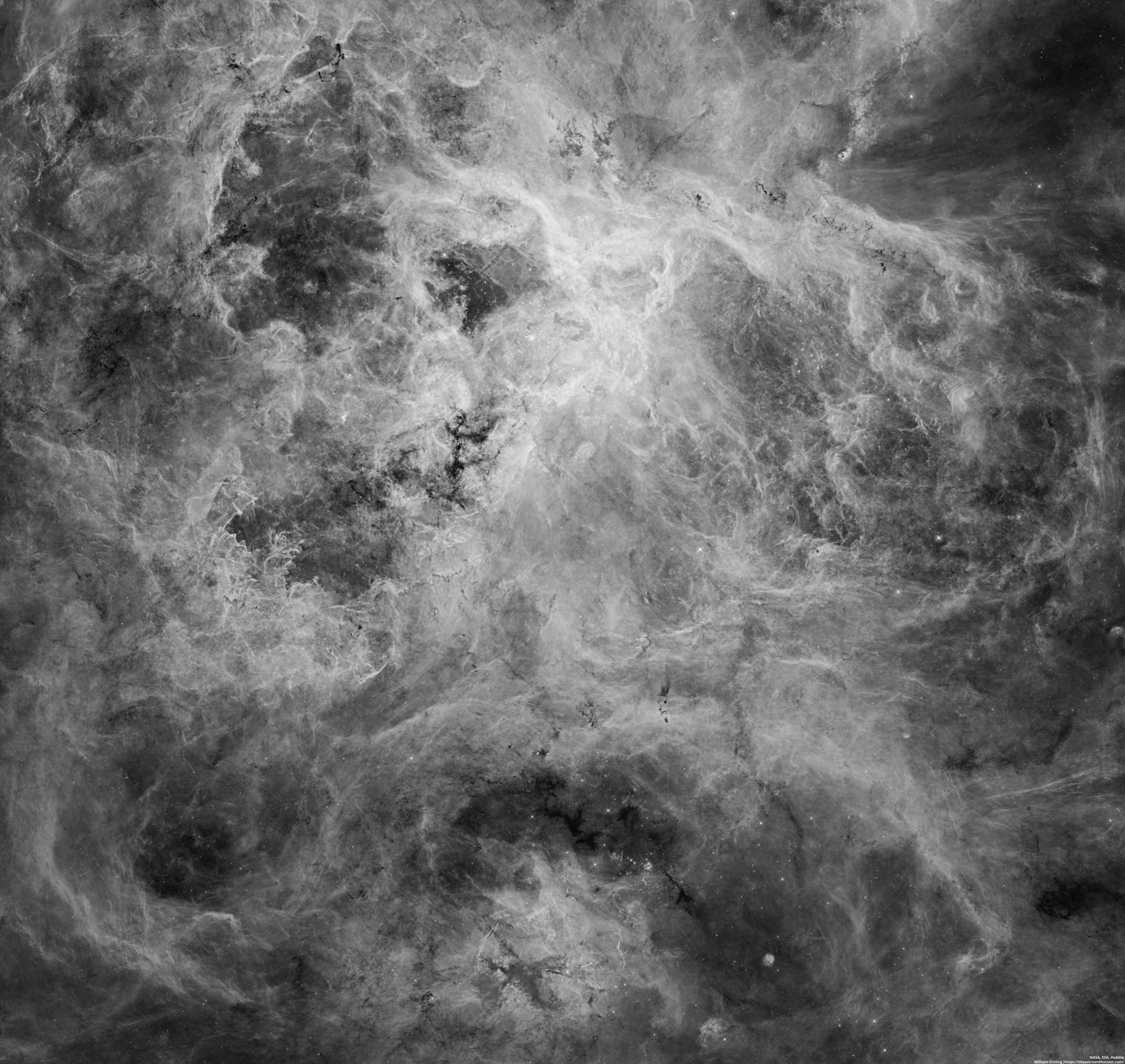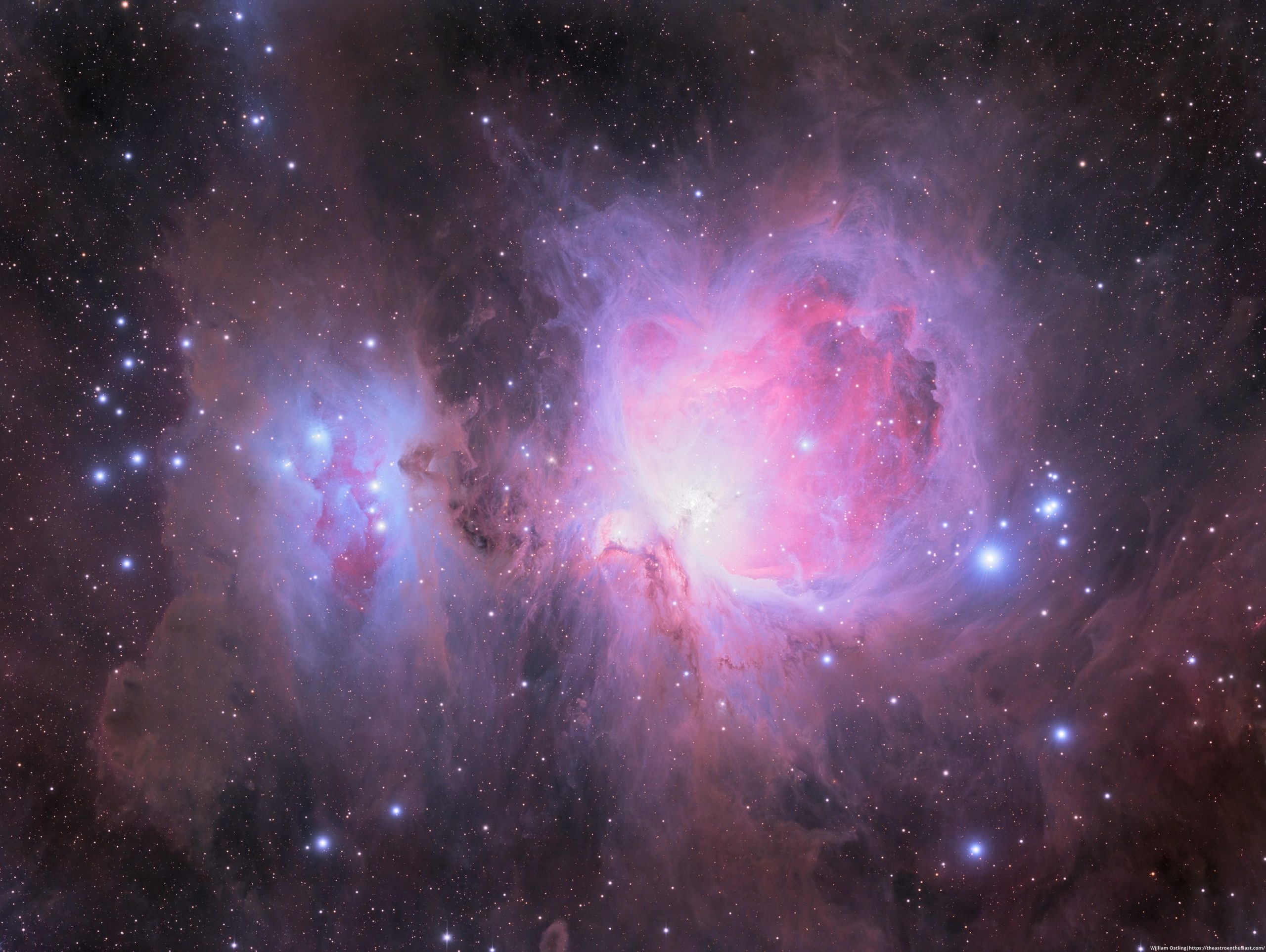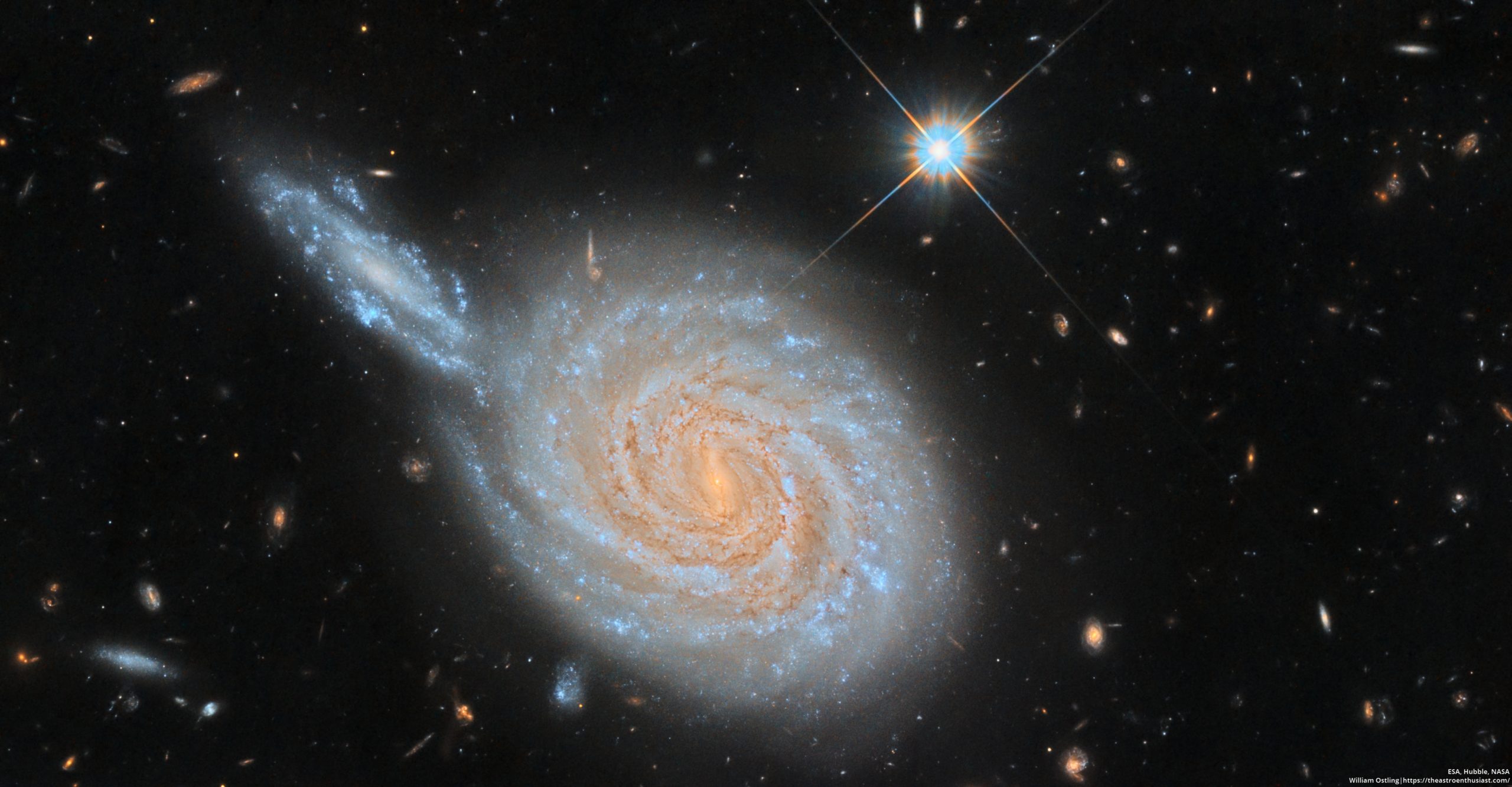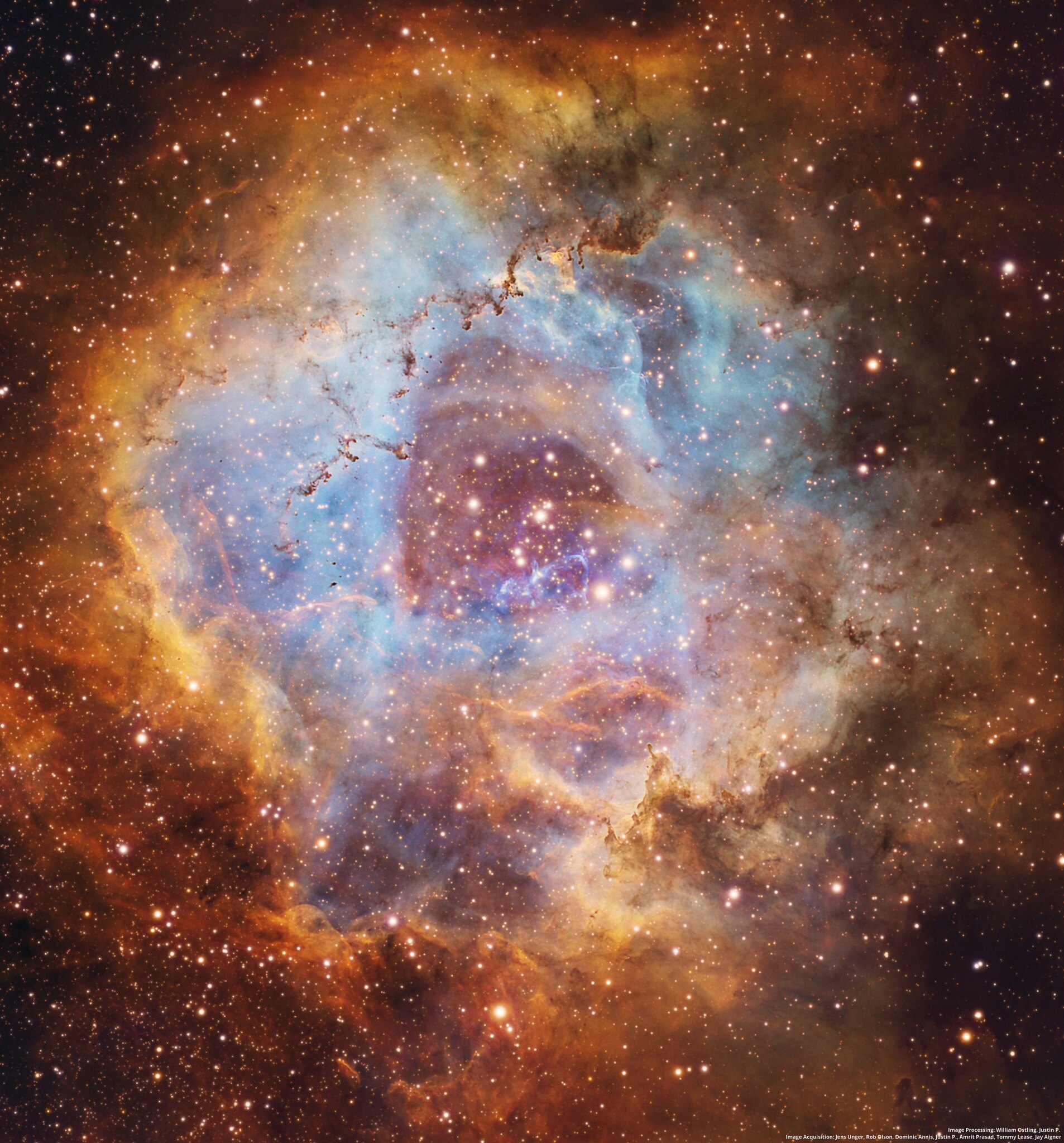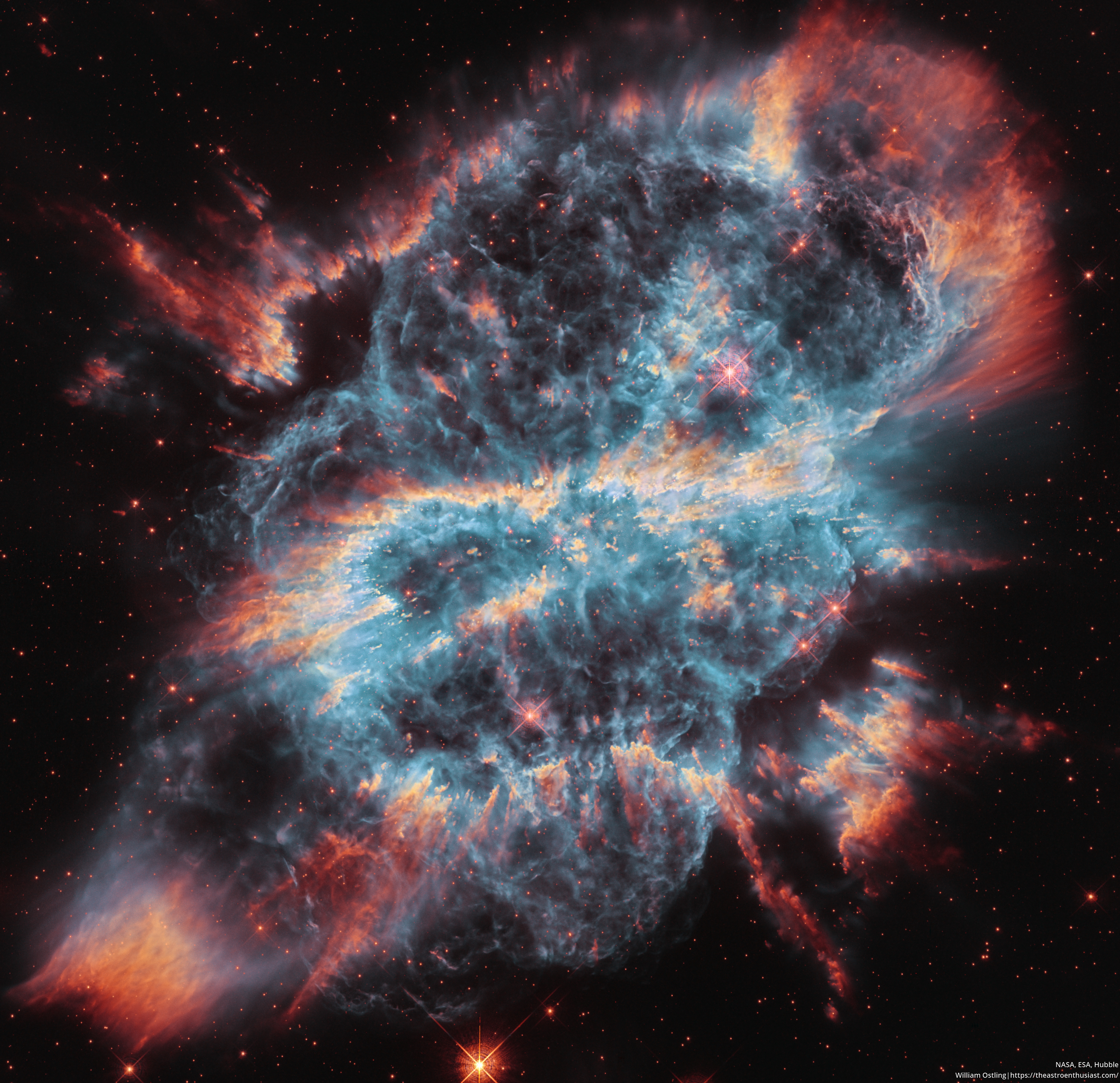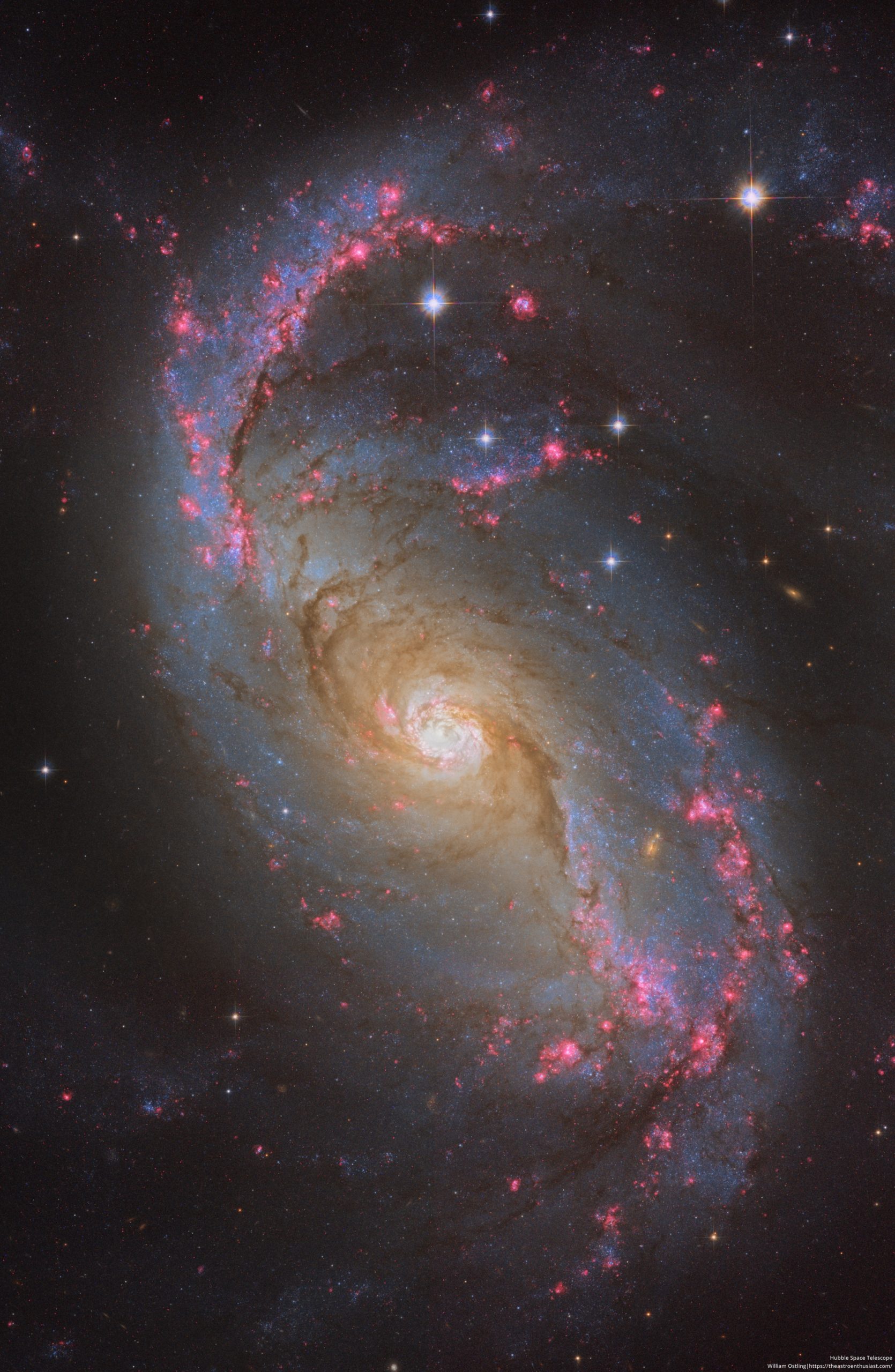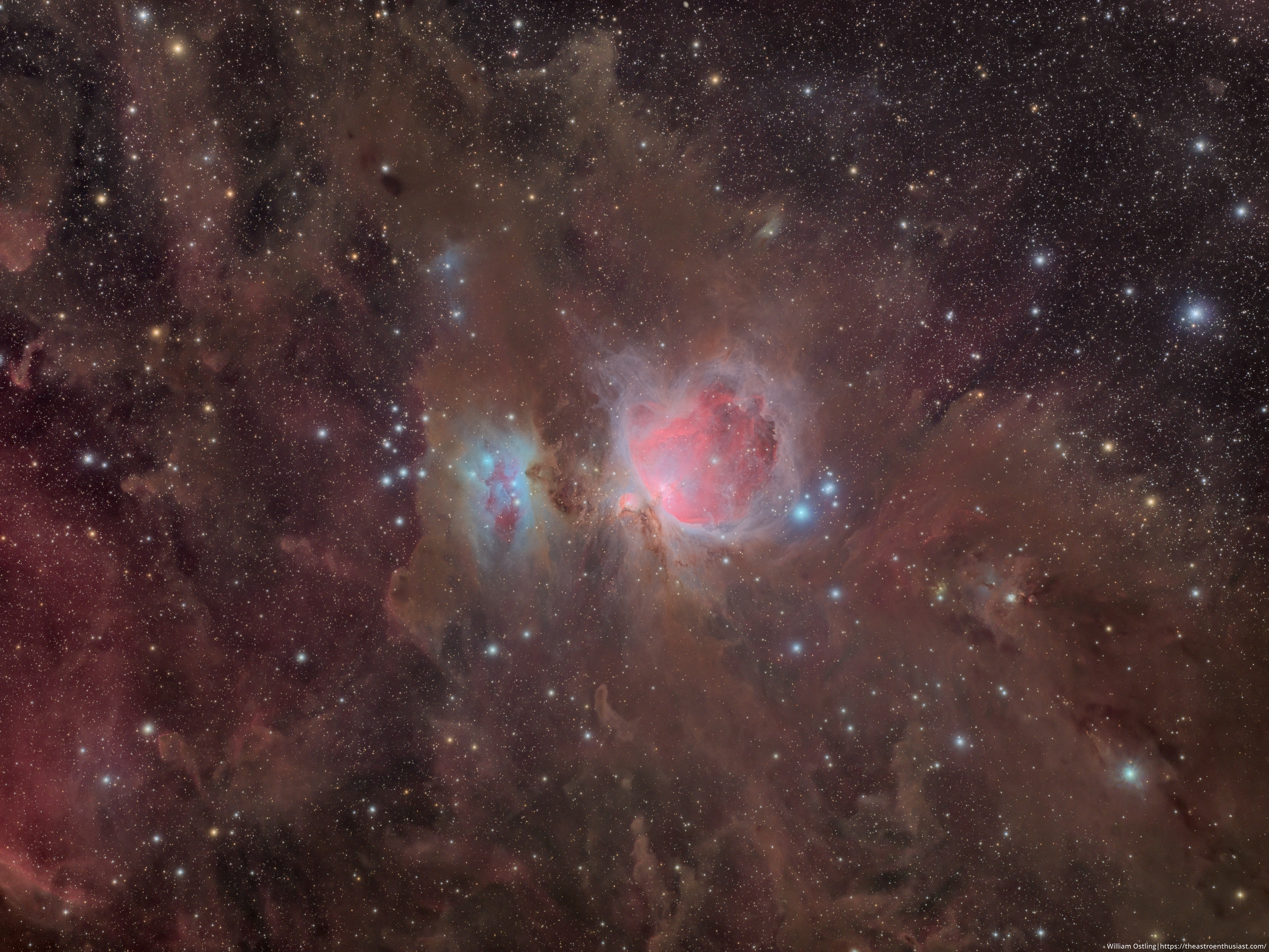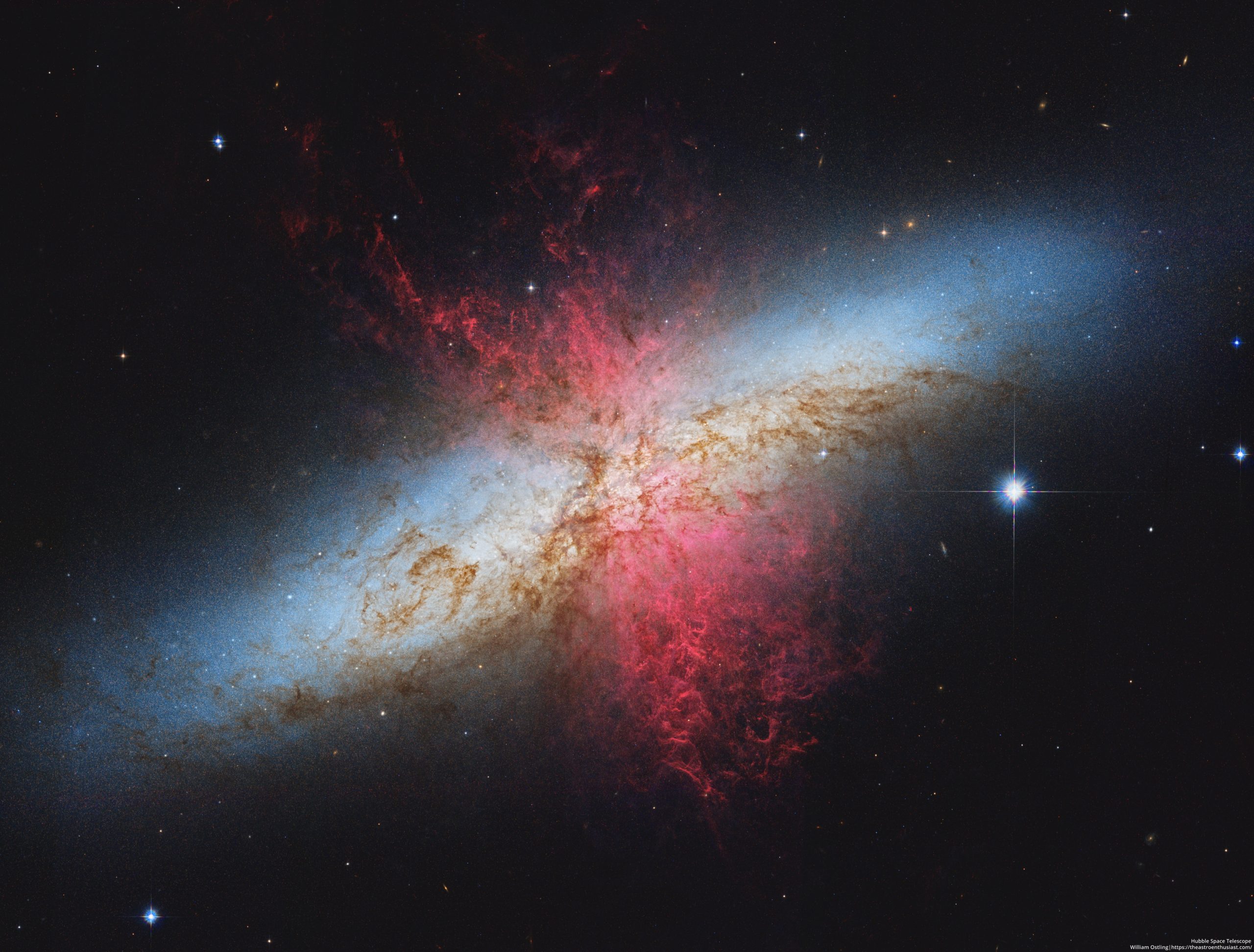Stellar Fireworks in NGC 4449
NGC 4449 has been forming stars for several billion years, but currently it is experiencing a star formation event at a much higher rate than in the past. At the current rate, the gas supply that feeds the stellar production would only last for another billion years or so. The hot, new young stars are illuminating the surrounding gas in a beautiful display. Pink regions represent ionized hydrogen gas, and blue regions represent ionized oxygen gas. Image: Details: Data was taken from the following proposals: https://archive.stsci.edu/proposal_search.php?mission=hst&id=10585, https://archive.stsci.edu/proposal_search.php?mission=hst&id=10522 […]
Read more